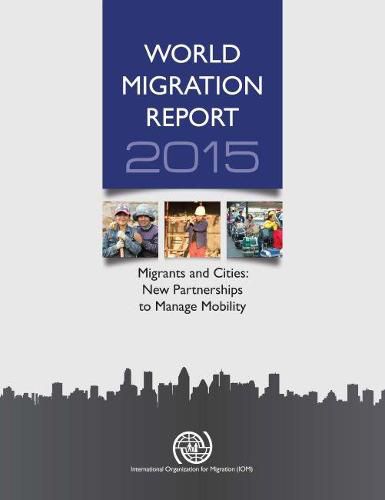Readings Newsletter
Become a Readings Member to make your shopping experience even easier.
Sign in or sign up for free!
You’re not far away from qualifying for FREE standard shipping within Australia
You’ve qualified for FREE standard shipping within Australia
The cart is loading…






We live in a world which is becoming increasingly urban. Over 54 per cent of people across the globe were living in urban areas in 2014. The current urban population of 3.9 billion is expected to grow to some 6.4 billion by 2050. Migration is driving much of the increase in urbanization, making cities much more diverse places in which to live. Nearly one in five of all migrants live in the world’s top 20 largest cities. In many of these cities migrants represent over a third or more of the population. Other cities have seen a remarkable growth in migration in recent years. In Asia and Africa, rapidly growing small cities are expected to absorb almost all the future urban population growth of the world and this mobility pattern to cities and urban areas is characterized by the temporality and circularity of the internal migration process. The fast rate of urbanization, and rising migration to cities, brings with it both risks and opportunities for the migrants, communities and governments concerned. The World Migration Report 2015 explores how migration and migrants are shaping cities, and how the life of migrants, in turn, is shaped by cities, their people, organizations and rules. The report contributes to the global debate on migration and urbanization in three ways. First, it documents how migration is shaping cities and the situation of migrants in cities. Much of the current discussion about migration trends and migration policy tends to focus on the national level. Taking the migration enquiry to the city level increases our understanding of the local political economies of migration and the close connection between migration and urban development. Second, the report draws attention to the livelihood of migrants in the cities of the Global South. The existing discussions on migrants and cities are inclined to concentrate primarily on the Global North and the integration of international migrants. Third, the report examines both internal and international migration with cities across the development spectrum having to manage growing mobile and diverse populations.
$9.00 standard shipping within Australia
FREE standard shipping within Australia for orders over $100.00
Express & International shipping calculated at checkout
We live in a world which is becoming increasingly urban. Over 54 per cent of people across the globe were living in urban areas in 2014. The current urban population of 3.9 billion is expected to grow to some 6.4 billion by 2050. Migration is driving much of the increase in urbanization, making cities much more diverse places in which to live. Nearly one in five of all migrants live in the world’s top 20 largest cities. In many of these cities migrants represent over a third or more of the population. Other cities have seen a remarkable growth in migration in recent years. In Asia and Africa, rapidly growing small cities are expected to absorb almost all the future urban population growth of the world and this mobility pattern to cities and urban areas is characterized by the temporality and circularity of the internal migration process. The fast rate of urbanization, and rising migration to cities, brings with it both risks and opportunities for the migrants, communities and governments concerned. The World Migration Report 2015 explores how migration and migrants are shaping cities, and how the life of migrants, in turn, is shaped by cities, their people, organizations and rules. The report contributes to the global debate on migration and urbanization in three ways. First, it documents how migration is shaping cities and the situation of migrants in cities. Much of the current discussion about migration trends and migration policy tends to focus on the national level. Taking the migration enquiry to the city level increases our understanding of the local political economies of migration and the close connection between migration and urban development. Second, the report draws attention to the livelihood of migrants in the cities of the Global South. The existing discussions on migrants and cities are inclined to concentrate primarily on the Global North and the integration of international migrants. Third, the report examines both internal and international migration with cities across the development spectrum having to manage growing mobile and diverse populations.